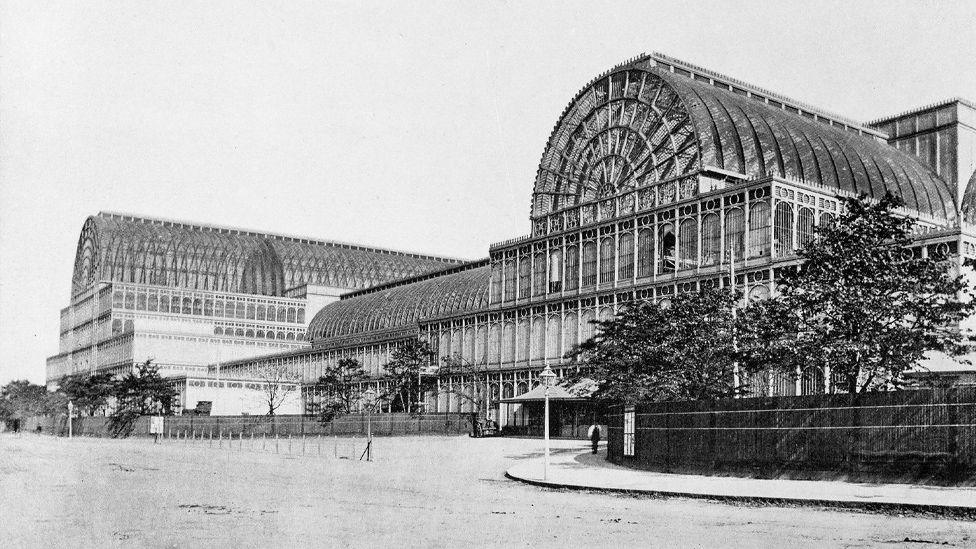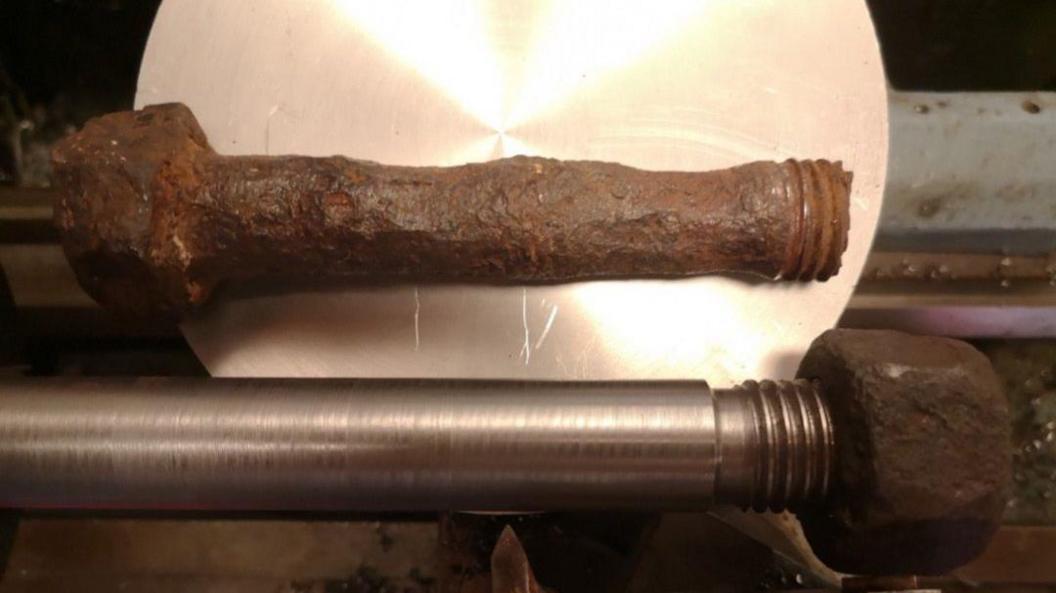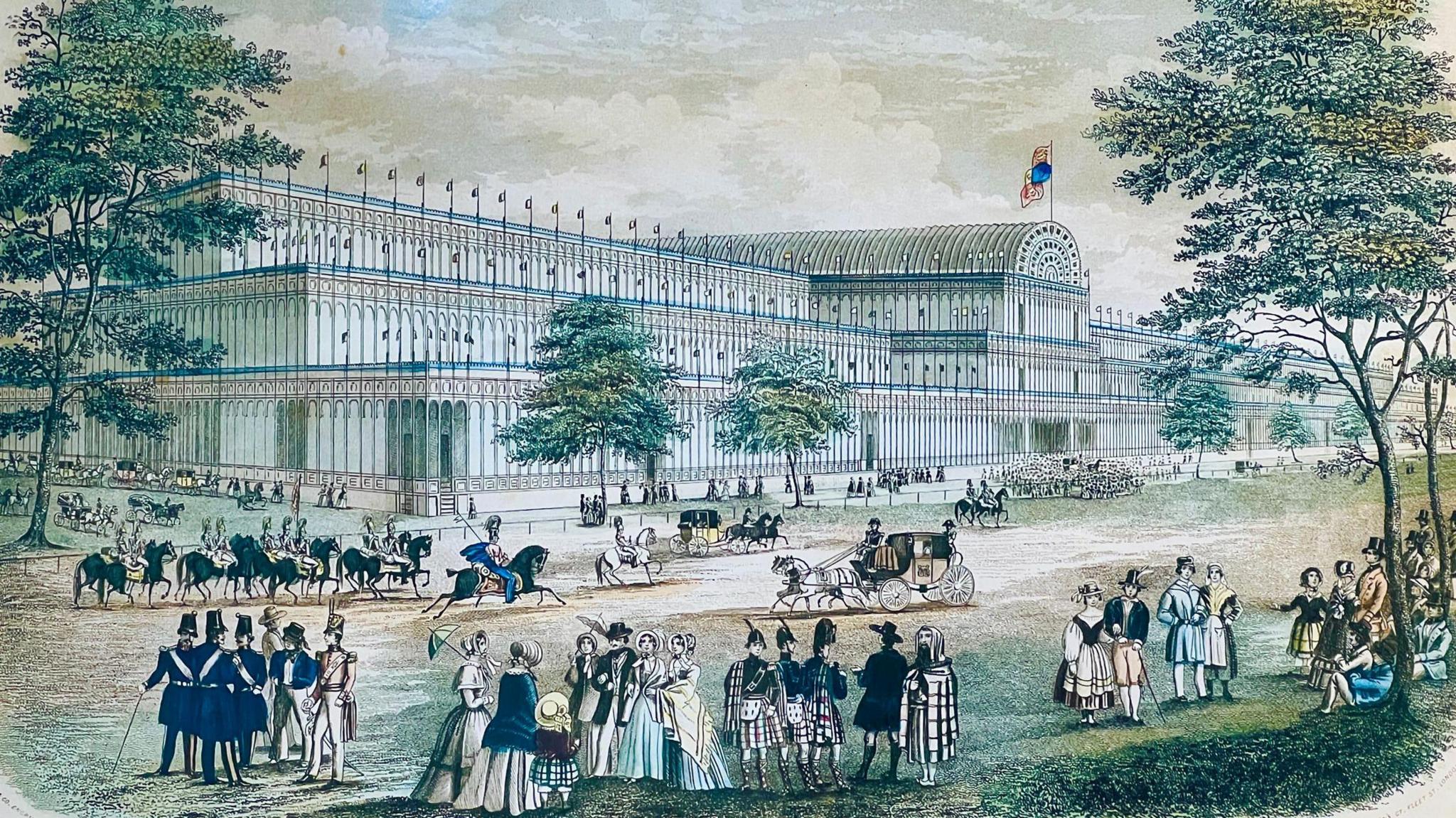Study reveals secret of 190-day Crystal Palace build

The Crystal Palace was seen as an example of Victorian Britain's industry
- Published
A new study has revealed that London's Crystal Palace was built in just 190 days thanks to a now standard innovation - the screw thread.
The design of the glass structure was approved in 1850 and constructed in time for the Great Exhibition of 1851.
Prof John Gardner of Anglia Ruskin University and his team examined how what was then the biggest building on earth was built so quickly.
"Progress was happening at such a rate that certain breakthroughs were perhaps never properly realised at the time, as was the case here with the Crystal Palace," he said.

The humble screw thread proved to be a lesser-known construction innovation
The building was seen as a symbol of Victorian Britain's industrial might, the university said.
At more than 560m (1,837ft) long and with a giant glass roof supported by 3,300 cast iron columns, the structure was so large that it would expand by up to 12in (30cm) on a warm day.
The study has found that the Crystal Palace is the earliest known building to use Whitworth screw threads, later known as British Standard Whitworth (BSW), the world’s first national screw thread standard.

The Crystal Palace was built in well under a year for the 1851 Great Exhibition
The Crystal Palace was originally constructed for the Great Exhibition in Hyde Park, in central London, before being dismantled and rebuilt in south-east London in 1854, where it remained until it was destroyed by fire in 1936.
The researchers discovered the use of Whitworth screw threads at the site in Sydenham both in the remains of the building and the nearby south water tower, designed by Isambard Kingdom Brunel and built to power the fountains in front of the Crystal Palace.
Prior to the Whitworth innovation, no two screws across different manufacturers had the same thread, the researchers said.
Crystal Palace Subway restoration progress revealed
- Published12 September 2024
Council pulls out of palace talks
- Published26 February 2015
"Standardisation in engineering is essential and commonplace in the 21st century, but its role in the construction of the Crystal Palace was a major development," Prof Gardner said.
“Ironically, Joseph Whitworth was awarded a Council Medal for his displays at the exhibition inside the Crystal Palace, but his important role in the construction of the building itself hasn’t been recognised until now.”
Listen to the best of BBC Radio London on Sounds and follow BBC London on Facebook, external, X, external and Instagram, external. Send your story ideas to hello.bbclondon@bbc.co.uk, external